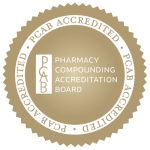The experience of pain is a complex health issue. Managing it can be even more complex. Pain’s subjective and perceptual aspect make it very difficult to accurately measure and assess. In treating pain the practitioner must consider all the other factors that contribute to it, such as: patient’s medical history and associated conditions, age, cause of pain, location of pain, sensitivity to pain, response to medication, etc. Precise evaluation becomes even more problematic. All these issues combined lead to unique individual experiences for the patient. Each distinct experience must be treated as such – and be individualized.
For an experienced pain management practitioner, this means creating a well-thought out personalized treatment plan for each patient. In addition, there are also non-drug options. Resting, stretching, exercising, applying heat or ice – are some examples of non-medical treatment options that can help in treating certain forms of pain.
-Alternative treatments that can help are: acupuncture, chiropractic, massage, electro-stimulation, biofeedback, hypnosis, etc.
-Medical treatments consist mainly of pain-relieving medications starting from over-the-counter NSAIDS and going to opioids (that should be the last resort).
Oral pharmacological therapy is the first line of approach for the medical treatment of pain. In recent years, much research has been done on transdermal delivery of pain medications. This type of therapy has been demonstrated to be an efficacious treatment option that comes with many added benefits for the patient. Abundant literature supports this treatment option for various drug classes as well as their combinations.
Prescribing the medication is easily accomplished using a compounding pharmacy that will allow you to combine all the needed active pharmaceutical ingredients (API’s) in their exact strength in one preparation, formulated based on your patient’s unique needs. In many cases, a combination of therapeutic approaches is used to create a personalized treatment plan. Many judicious pain management practitioners are already prescribing compounded transdermal pain medications for their patients. Few prescribers know that they can further help their patients and enhance their practice by combining compounded pain medications with other custom compounded treatment modalities they may already be using to ease the patients’ pain – phonophoresis and iontophoresis.
Here are a few examples of compounded pain formulations that can be used with phonophoresis (ultrasound):
- Hydrocortisone 10% Ultrasound Gel
- Dexamethasone 1.5%/Lidocaine 4% Ultrasound Gel
Some examples of formulations that can be prescribed with iontophoresis are:
- Amitriptyline 5%/Cyclobenzaprine 5%/Lidocaine 10% Iontophoresis Solution
- Gabapentin 6% Iontophoresis Solution
- Dexamethasone 0.4% Iontophoresis Solution
If you want to help your patients with pain, then consider adding these valuable adjunct options in your pain management therapeutic bundle and contact a compounding pharmacy for their expertise in preparing these formulations.
Select a compounding pharmacy that excels in proven quality service. HALDEY Pharmaceutical Compounding can be your trusted resource for compounding solutions! We have the credentials to show our commitment to quality and the experienced pharmacists capable of innovative options to help your patients. Contact HALDEY Pharmaceutical Compounding today to learn more about compounding for pain.
References:
Transdermal drug delivery in pain management Published: 10 January 2011
Sanjay Bajaj, MD DNB FRCA Abigail Whiteman, MA MB BChir FRCABrigitta Brandner, MD FRCA FFFPMRCA
Continuing Education in Anaesthesia Critical Care & Pain, Volume 11, Issue 2, 1 April 2011, Pages 39–43
Pain Management Therapy: The Benefits of Compounded Transdermal Pain Medication
Andrea Branvold* and Maria Carvalho – PCCA, 9901 South Wilcrest Dr., Houston, TX 77099-5132, USA
J Pharm Sci. 2007 Mar;96(3):595-602.
Transdermal delivery of nonsteroidal anti-inflammatory drugs mediated by polyamidoamine (PAMAM) dendrimers.
Cheng Y1, Man N, Xu T, Fu R, Wang X, Wang X, Wen L.
Seminars in Arthritis and Rheumatism – Volume 45, Issue 4, Supplement, February 2016, Pages S18-S21
Efficacy and safety of topical NSAIDs in the management of osteoarthritis: Evidence from real-life setting trials and surveys
Author links open overlay panel François Rannou MD, PhD, Jean-Pierre Pelletier MD, Johanne Martel-Pelletier PhD




